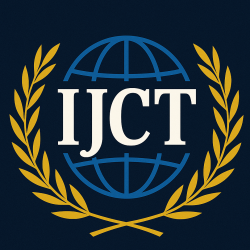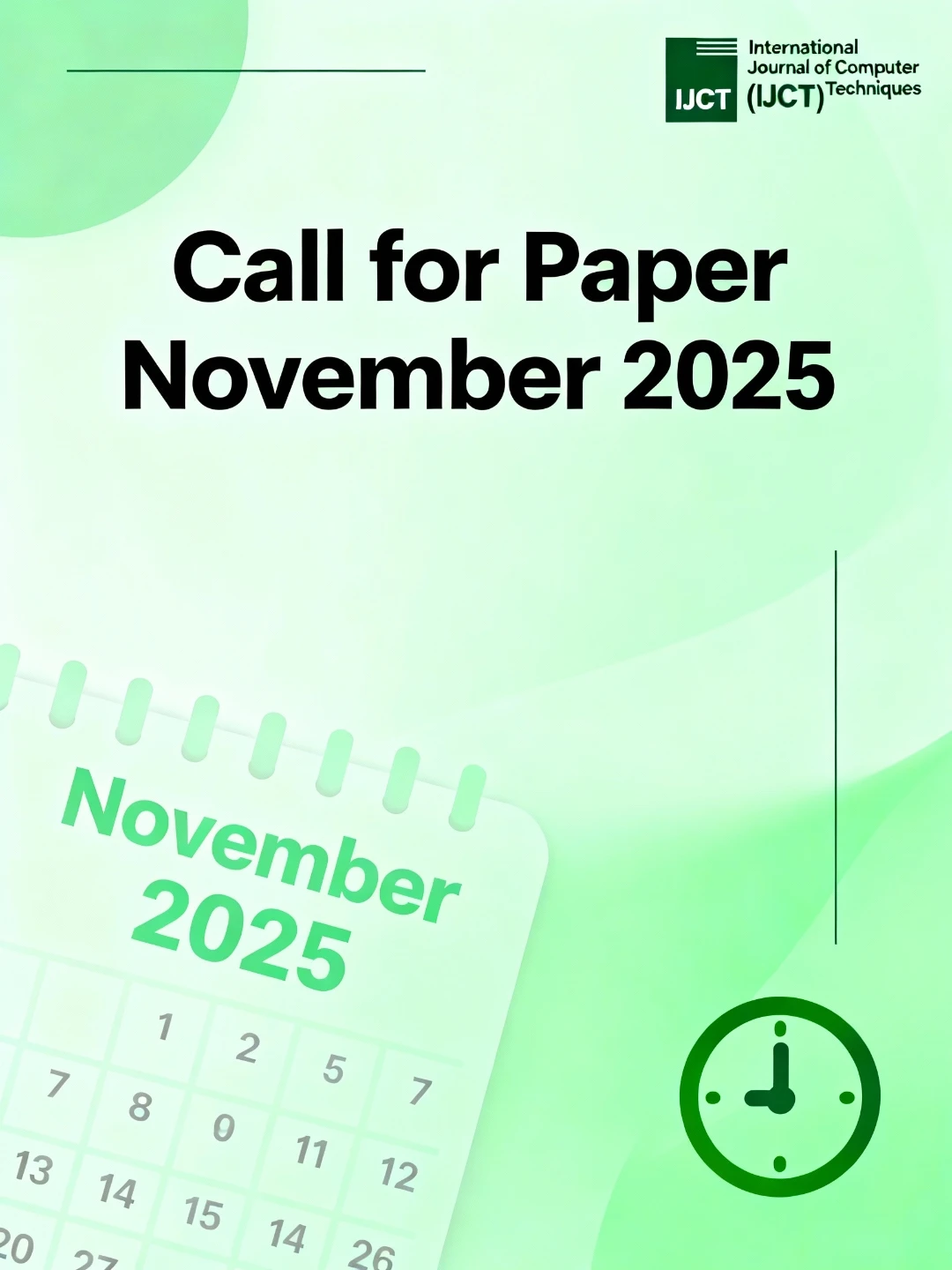
“INTEGRATED INTELLIGENCE : A STUDY OF AI’S EVOLVING ROLE IN MODERN HUMAN LIFE” – Volume 12 Issue 5

International Journal of Computer Techniques
ISSN 2394-2231
Volume 12, Issue 5 | Published: September – October 2025
Author
Ms.M.Jayalakshmi
Table of Contents
ToggleAbstract
Artificial Intelligence (AI) has seamlessly integrated into the daily rhythm of human life, influencing decisions, behaviors, and interactions from dawn to dusk. This paper explores the pervasive role of AI across a typical day, highlighting its contributions to personal productivity, healthcare, mobility, communication, and entertainment. Beginning with AI-powered sleep tracking and personalized morning routines, the study examines how intelligent assistants optimize scheduling, recommend nutrition, and facilitate remote work. In professional settings, AI enhances decision-making through data analytics, automates routine tasks, and supports virtual collaboration. The afternoon segment focuses on AI in healthcare monitoring, smart logistics, and adaptive learning environments. By evening, AI curates personalized content, manages home automation, and supports mental wellness through conversational agents. The paper also reflects on ethical considerations, data privacy, and the psychological impact of continuous AI interaction. Through a multidisciplinary lens, this study underscores AI’s evolving role as both a tool and companion in modern human life, advocating for responsible integration that enhances well-being without compromising autonomy.
Keywords
Artificial Intelligence (AI), Human–AI Interaction, Daily Life Automation, Intelligent Assistants, Digital Health, Remote Work, Adaptive Learning, Smart Technologies, AI Ethics, Data Privacy, Technology SubstitutionConclusion
Artificial Intelligence has evolved into an indispensable part of modern living, subtly shaping behaviors, decisions, and interactions across various domains. From smart assistants and predictive healthcare to autonomous vehicles and personalized learning, AI offers convenience and efficiency while raising important ethical questions. The paper concludes that while AI holds immense potential to improve quality of life, its deployment must be guided by ethical frameworks that prioritize human values, fairness, and accountability. Responsible integration of AI is essential to ensure that technological progress aligns with societal well-being.
References
[1] M. Verma, “Artificial intelligence and its scope in different areas with special reference to the field of education,” Artificial Intelligence, vol. 3, no. 1, pp. 5–10, 2018. [2] A. Brynjolfsson and T. Mitchell, “What can machine learning do? Workforce implications,” Science, vol. 358, no. 6370, pp. 1530–1534, 2017. [3] A. Dwivedi, R. K. Kapoor, and S. K. Jain, “Artificial intelligence (AI) adoption: A review of AI applications in business and productivity,” Journal of Business Research, vol. 145, pp. 557–570, 2022. [4] S. K. Sharma and M. Singh, “AI-powered virtual assistants: A study on productivity and user experience,” International Journal of Human–Computer Interaction, vol. 39, no. 2, pp. 123–135, 2023. [5] S. Secinaro, D. Calandra, A. Secinaro, V. Muthurangu, and P. Biancone, “The role of artificial intelligence in healthcare: a structured literature review,” BMC Medical Informatics and Decision Making, vol. 21, article 125, 2021. [6] P. Sarkar, K. Gopinath, and A. V. Prakash, “Healthcare AI: A Bibliometric Review,” in Transfer, Diffusion and Adoption of Next-Generation Digital Technologies, IFIPAICT, vol. 698, pp. 429–441, Springer, 2023 [7] N. Gillani, R. Eynon, C. Chiabaut, and K. Finkel, “Unpacking the ‘Black Box’ of AI in Education,” Educational Technology & Society, vol. 26, no. 1, pp. 99–111, 2023. [8] “Artificial Intelligence in Education,” Emerald Publishing, 2025. [9] J. Rudolph, S. Tan, and S. Tan, “ChatGPT: Bullshit Spewer or the End of Traditional Assessments in Higher Education?” Journal of Applied Learning and Teaching, vol. 6, no. 1, Jan. 2023. [10] S. Singh, “Critical reasons for crashes investigated in the National Motor Vehicle Crash Causation Survey,” National Highway Traffic Safety Administration, DOT HS 812 115, 2015. [11] Y. Wu, H. Tan, L. Qin, B. Ran, and Z. Jiang, “A hybrid deep learning based traffic flow prediction method and its understanding,” Transportation Research Part C: Emerging Technologies, vol. 90, pp. 166–180, 2018. [12] V. R. K. Adapa, “Artificial Intelligence in Transportation: A Paradigm Shift in Mobility and Urban Planning,” International Journal of Research in Computer Applications and Information Technology, vol. 7, no. 2, 2024. [13] X. Guo, Z. Shen, Y. Zhang, and T. Wu, “Review on the Application of Artificial Intelligence in Smart Homes,” Smart Cities, vol. 2, no. 3, pp. 402–420, 2019. [14] X. Guo et al., “Review on the Application of Artificial Intelligence in Smart Homes,” ResearchGate, 2019. [15] V. R. Hiremath, V. M. N, and S. K. R, “Literature Survey of AI Based Home Automation,” International Advanced Research Journal in Science, Engineering and Technology (IARJSET), vol. 9, no. 3, 2022. DOI: 10.17148/IARJSET.2022.9324 [16] M. Maiti, P. Kayal, and A. Vujko, “A study on ethical implications of artificial intelligence adoption in business: challenges and best practices,” Future Business Journal, vol. 11, article 34, Mar. 2025 [17] E. Ratti, M. Morrison, and I. Jakab, “Ethical and social considerations of applying artificial intelligence in healthcare—a two-pronged scoping review,” BMC Medical Ethics, vol. 26, article 68, May 2025. [18] D. B. Resnik and M. Hosseini, “The ethics of using artificial intelligence in scientific research: new guidance needed for a new tool,” AI and Ethics, vol. 5, pp. 1499–1521, May 2024.
IJCT Important Links
© 2025 International Journal of Computer Techniques (IJCT).










